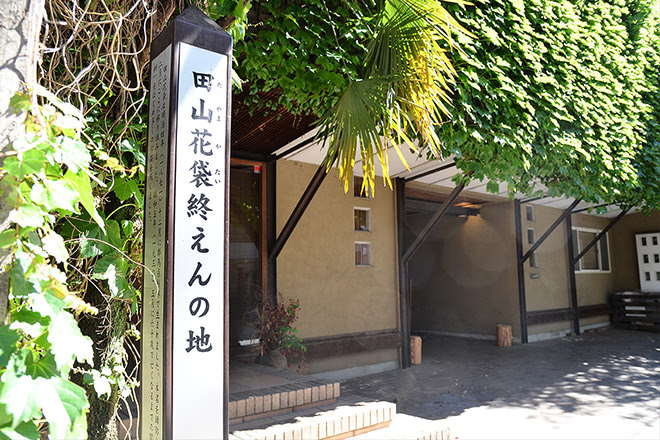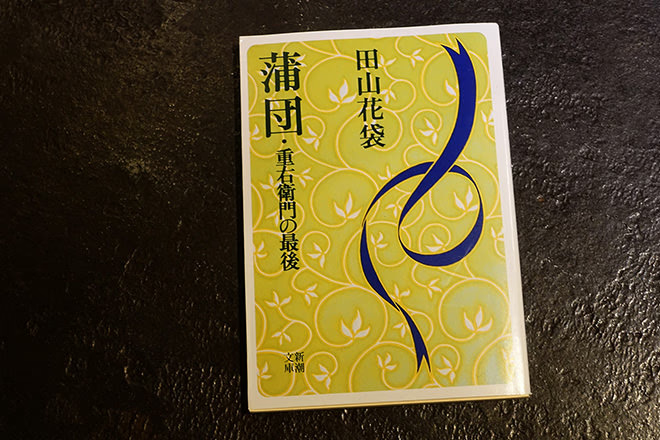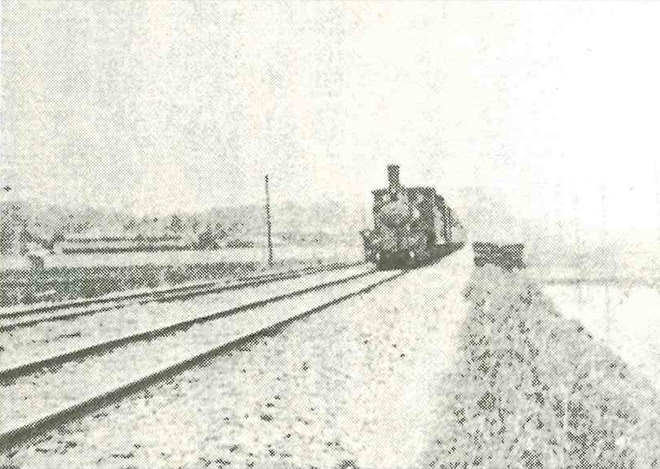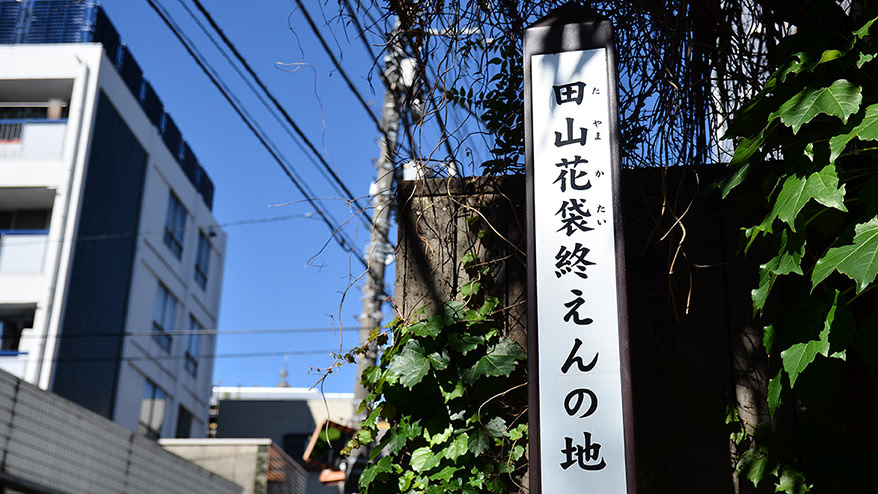Hello. This is Nakaniwa, the editor-in-chief.
It's been about five years since I joined Monosus, and there's something that has been bothering me since the beginning, but I've never really discussed it with anyone at the company.
This refers to the monument at the entrance to Monosus marking the place where Katai Tayama died.

When I first joined the company, it was a wooden monument, standing quietly amongst the lush vegetation, but one day about two years ago, it was renovated and made of iron. The vegetation has been cut down, and it is now more clearly visible than before.
However, whether it is made of wood or steel, it does not receive much attention within the company and is rarely discussed (except for the brief period when Ingress was a hot topic).
Some people may be wondering, "Who is Tayama Katai? Hanabukuro?" In this issue of "Book News," I would like to write about Tayama Katai, Yoyogi, and my memories of him.
Memories of Katai Tayama
Katai Tayama is a great naturalist writer who lived from 1871 to 1930. When I was a student of literature in college, I was assigned to write an essay about his masterpiece, "The Futon," in my second-year pre-seminar. Every time I see the monument at the place where he died, I remember that time and "The Futon."

Katai Tayama, "The End of the Futon and Shigeemon", Shincho Bunko, 1952
Summary of "The Futon" The protagonist is a middle-aged literary writer in his mid-30s with a wife and children.
An aspiring writer ends up supervising a female student who wants to become his apprentice in his own home, and he begins to feel something that is unclear whether it be teacher-student love or romantic love. Eventually, he becomes jealous when she falls in love with a man her own age, and sends her back to her parents in the countryside. The protagonist is left alone in her room, curled up under her futon, and sobs.
This work (first published in 1907) is based on Hanagata's own experiences and is said to be the beginning of autobiographical novels.
The story itself is about a middle-aged man's delusions about a young girl. When I first read it, I didn't find any particular points that resonated with me, but I remember that I read it desperately because it was an assignment from a professor (a Soseki scholar who reads in terms of textual theory) who was famous for being ruthless with lukewarm papers. (By the way, I later went on to the same professor's seminar. It was there that the roots of my current outlook on life were formed.)
So, although Tayama Katai had some small "memories," he didn't particularly think about it in his daily life afterwards.
However, after joining Monosus, every time I saw the monument at the place where he passed away, I would frequently think back to "The Futon" and the seminar.
Tayama Katai and Yoyogi
The narrative trend depicted by Katai Tayama in "The Futon," in which a middle-aged man has an outburst of delusions about a young girl, had already begun in his work "Shojobyo" (Girl's Disease), published a few months earlier.
Yoyogi Station, the closest station to Monosus, also appears in the novel, so I would like to introduce it as well, in keeping with the Yoyogi theme.
The story of "Shojobyo" (Girl's Disease) is about a 37-year-old magazine editor with a wife and children (the character is modeled on Hanagai himself, as in "Futon"). When he was young, he used to write "girl novels," a kind of new style of poetry. On his commute to Kanda from Yoyogi Station near his home, he takes pleasure in figuring out what kind of female students get on at what station, observing them, smelling them, and fantasizing about them. "Oh, if only I had wings to lure beautiful birds!" he laments.
Having written this much, it seems like a rather blunt story that makes you want to ask, "Hanagai, are you okay?", but perhaps because of its catchy title, it seems to continue to be read by enthusiasts even today.
The main setting of this novel is the journey from Yoyogi to Ochanomizu on the Kobu Line (now the Sobu Line, but at the time it was a steam train) where the protagonist transfers to the Sotobori Line (a streetcar) and commutes to his workplace in Kanda Nishikicho.
At that time (around 1907), the area around Yoyogi Station was still a "suburban" area, and the depiction of Sendagaya, where the protagonist lives, is also rural, so it feels strange to read.

The Kobu Line steam locomotive that runs between Shibuya and Harajuku (From "New Shibuya Literature" published by the Shibuya Ward Board of Education, p. 114)
The protagonist, who commutes from the suburbs to the city center, observes that the level of the female students increases as the train moves toward the city center. Some have interpreted this as a representation of the suburban/city center hierarchy.
(See Chiaki Ishihara, "Literature that Cuts Through the Suburbs," Tokyo Studies, p. 154 and onward, first published in 2005.)
Also, according to someone at the Shibuya Ward Local and Literary Museum , in Hanagata's time, there were a lot of young people who came to Tokyo hoping to make a name for themselves in literature, only to fail and return home.
They gathered in Shibuya, where land prices were still low, dreaming of success in the future.
Even if I travel from Yoyogi to Kanda by train these days, the scenery I see isn't that different, but when I look at Yoyogi today through the filter of old (let's put aside the girl filter for the moment), I feel like a fresh view opens up before me that is different from usual.
Monosus' Yoyogi office is located in the place where naturalist writer Katai Tayama died. If you visit, it might be fun to bring a copy of Katai Tayama's novel with you.

